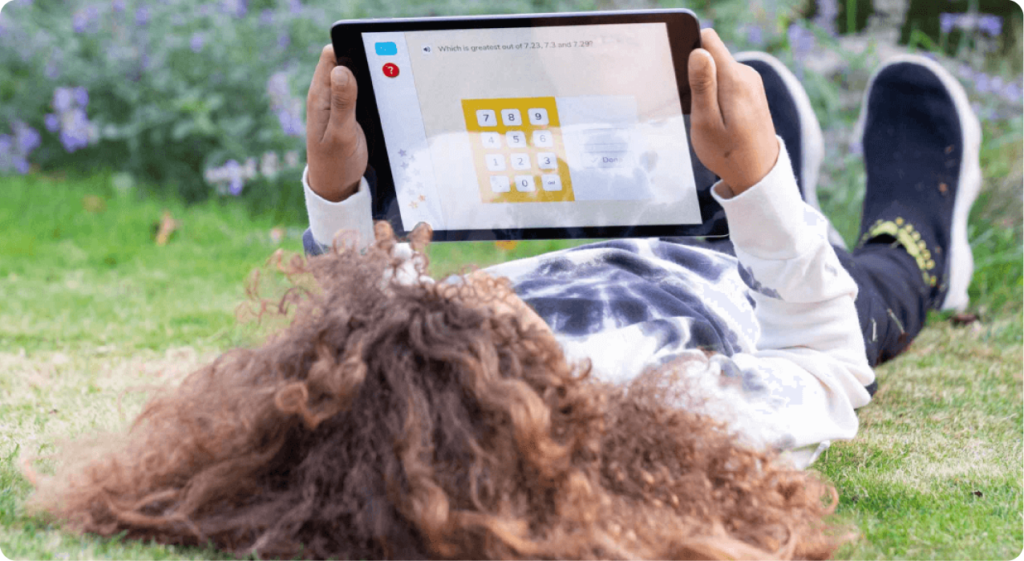Financial literacy is a really important life skill that everyone should learn. In fact, it’s never too early to start teaching kids about money management and financial planning: helping them develop good money habits from a young age can set them up for a lifetime of financial success!
Here are our top tips for how you can teach financial literacy to your kids or pupils.
In this blog, jump to:
- Why is financial literacy important for kids?
- How to teach financial literacy to kids
- Financial literacy resources for kids
Why is financial literacy important for kids?
As society has developed, managing money has become more and more complex.
Many adults struggle to manage their finances effectively and experience financial stress. In fact, according to a study by the Mental Health Foundation, over 1/3 of adults in the UK feel anxious about their finances.
With this in mind, it’s really important to start teaching kids about money management early on, as doing so can help them develop a healthy relationship with money and avoid financial stress later in life.
Additionally, financial literacy can help children to make informed decisions about their spending and learn the value of money, which can ultimately lead to better financial decisions in the future. Plus, kids who understand financial concepts can start saving from an early age!
How to teach financial literacy to kids
1. Start with the basics

The first step in teaching financial literacy is to start with the basics. This means explaining the different types of money, such as coins and bills, and how to count them.
You can use real or play money to help your child learn the different denominations and how to visually identify amounts of money.
If you’re looking for an engaging way to explore the topic, why not give DoodleMaths a go? Created by our team of teachers, it’s an app that’s filled with interactive activities about money, including adding coins together and giving change – and you can try it for free!
2. Use a piggy bank
The earlier you start teaching your kids or pupils about money, the better. Even toddlers can start to learn the basics of saving and spending!
Start by giving them a piggy bank and encourage them to save their coins. Once they’ve accumulated some coins, you can teach them how to save by explaining that keeping money in their piggy bank (by only spending a little or saving it) will lead to it increasing over time, letting them buy more expensive items.
3. Make money relatable
One of the best ways to teach financial literacy to kids is to make it relatable. Children are much more likely to learn and remember financial concepts if they can relate them to their own lives!
The next time you’re planning a day trip, encourage your child to save some money beforehand. Let them know that they can spend their savings on a souvenir or, if they’d rather, save their coins for another occasion in the future.
4. Explain key financial concepts
Once your kids or pupils understand the basics of money management, take the time to explore concepts such as budgeting and investing.
Explain the difference between ‘needs’ (essential purchases) and ‘wants’ (non-essential purchases), and that people prioritise their spending based on the importance of these factors and how much money they have.
Then, explain the role that budgeting and saving play in helping people to manage their finances, along with the need to save for emergencies and long-term goals (like buying a house!).
Finally, introduce the idea of investing by explaining the different ways that people can invest their money. Explain that while doing this may mean that they have less to spend in the short term, it’ll hopefully result in them receiving more money than they had before.
5. Use games and activities
Games are a great way to transform financial literacy into a fun, exciting activity. There are lots of games and apps available that teach children about money management, such as Monopoly, The Game of Life and Save! The Game.
You can also create your own activities, such as setting up a shop where your child or pupils can ‘buy’ items with play money. You could even hold a ‘sale’ to teach them about discounts and hunting around for the best prices!

6. Lead by example
Children learn by example, so it’s really important to model good financial habits when it comes to teaching financial literacy.
You could involve your child in your own financial decisions, such as food shopping, and explain the choices you make. For example, the next time you’re shopping for groceries, show them how you compare prices and look for deals to save money.
Explain that some shops stock the same items as others but sell them for different prices, and that buying items in bulk can be a cost-effective way to buy goods.
7. Explore the value of money
Finally, it’s really important to teach children the value of money. This means explaining that money is a limited resource and that it takes time and effort to earn it – and that it doesn’t really ‘grow on trees’!
Explain that people have jobs to earn money, and that different jobs are paid different amounts. By working hard at school, they’re helping their future selves to find a job that can give them money to buy the things they need (like food) and things they’d like (like holidays)!
Financial literacy resources for kids
Looking for more ways to explore financial literacy with your kids or pupils? These free apps are a great way to get started!
- DoodleMaths: DoodleMaths is the perfect way to introduce kids to money and explore financial concepts. Designed for ages 4-14, it creates each child a unique work programme that targets tricky topics and introduces new concepts – and you can try it for free!
- Barclays LifeSkills: Barclays LifeSkills has lots of free lesson plans and interactive tools that can be used to teach kids about financial literacy. Simply create an account to gain access to all of their resources!
- Bankaroo: Bankaroo is a virtual bank for children that helps them learn about money management. Kids can create their own accounts, set savings goals and track their spending. Meanwhile, parents and teachers can use the programme to teach them about budgeting and saving.
In summary…
By teaching your kids about financial literacy, you can help them develop great money habits that’ll serve them well throughout their lives. Start early, make it fun and be a good role model. With a little effort, you can help your kids or pupils to become financially literate and successful adults!
For even more ways to explore money and finances, be sure to give DoodleMaths a go. From currencies to saving money, it covers everything children need to know about money – and you can try it for free!

